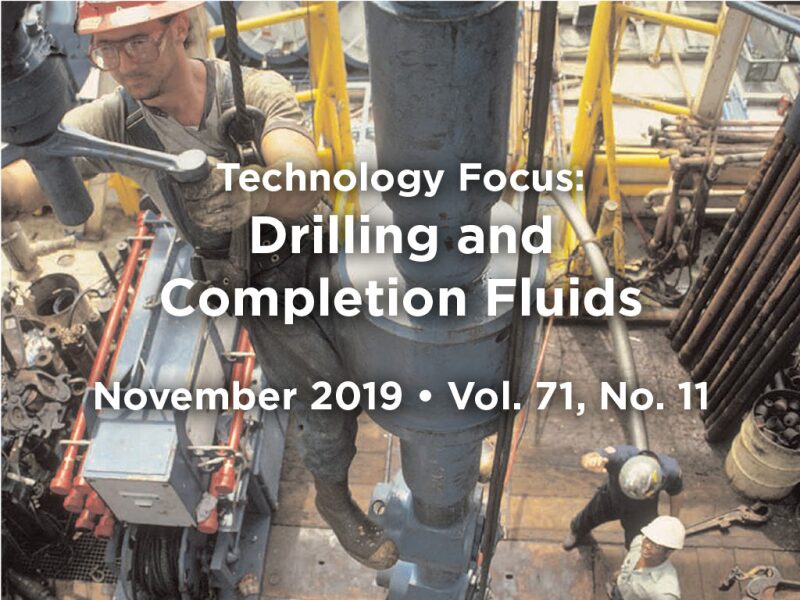To drill or not to drill? To damage or not to damage? These are compelling questions. Recent research has put extensive focus on the magic of graphene in drilling fluids. Graphene, because of its thermal, electrical, chemical, and mechanical properties, improves mudcake stability and minimizes fluid loss that eventually reduces formation damage.
The term “graphene” was introduced in 1986, and, in 2004, the extraction of graphene was presented, which later made it commercially available. In 2010, the Scotch-tape method was announced to peel off the tiny graphite flakes into a monolayer, 2D graphene layers with the fewest possible defects. The rest, as they say, is history.
The significant attention on graphene as a drilling-fluid additive has increased because of its Newtonian fluid behavior, low fluid loss, and formation of firm and stronger mudcake. The addition of graphene or graphene oxide can improve the control of fluid loss, the stability of shale, and lubrication. The addition of graphene nanoparticles to drilling fluid has presented a significant surge in the proportion of dispersion, a reduction in torque, and an increase in drilling bits deprived of the destructive effects of the rheological properties of drilling mud. Because of its stability and small particle size, use of graphene nanoparticles is considered one of the better alternatives for fluid-loss control in drilling fluid. Literature also reports the advancement of aggregation and poor dissolution in well fluids with the addition of graphene. Graphene oxide may retain permeation and acts as a modified fluid-loss-control additive.
Furthermore, graphene enhances the rheological properties of drilling fluids at both low and elevated temperatures and pressures. Another drilling-related factor that seems to be overlooked is shale stability. The interaction of water with clay materials is common, which leads to swelling, thus slowing the circulation of drilling fluid. It has been reported that graphene is able to improve shale stability. It serves as an excellent medium for improvement of shale inhibition.
Graphene is expensive. This is one of the main challenges for its application. Efforts are under way to generate sources of graphene from industrial waste. Such waste includes diesel vehicles, batteries, and many other carbonaceous waste materials.
Additionally, determining the quality or grade of the extracted graphene from these wastes is crucial. Many applications can be suitable for graphene-based material, from graphite oxide to graphene oxide to graphene oxide reduced until a higher quality of graphene is reached. It is applicable for various applications, including for composite material, biomedical material, waste treatment, electronics, medicine, energy, and membrane technology.
The minimum level of graphene quality required for drilling fluids may be unknown. Many researchers seem to use a higher graphene quality than is needed. Considering the high cost of graphene, studies on the lowest possible graphene quality that provide acceptable rheological drilling-fluid properties are highly recommended.
I hope you enjoy and benefit from the selected and highlighted papers. Other interesting papers can be found in the list of recommended additional reading and in the OnePetro online library.
This Month's Technical Papers
Water-Based Drilling Fluid Using Nanoparticles Proves Effective in Unconventional Shales
Nonaqueous, Nondamaging Fluid Implemented Offshore Abu Dhabi
Low-Toxicity Polymer Fluid Developed for Environmentally Sensitive Offshore Drilling
Recommended Additional Reading
IPTC 19406 Development of a Novel Antitemperature, Antiwear, and Ecofriendly Lubricant SDL-1 for Water-Based Drilling Fluid by Yunfeng Liu, China University of Petroleum, et al.
SPE 193618 An Innovative Rheology Modifier That Provides Dual Function, Achieves Nondamaging Clay-Free System for Reservoir Drilling and Flat Rheology for Deepwater Drilling by Vivek Gupta, Gumpro Drilling Fluids, et al.
SPE/IADC 194102 Dump, Condition, Dilute: Using High-Voltage Technology To Extract Solids From Drilling Fluid by Kody Chandler, BOS Solutions, et al.

| Badrul Mohamed Jan, SPE, is an associate professor and researcher attached to the Department of Chemical Engineering, University of Malaya (UM), Malaysia. He holds BS, MS, and PhD degrees in petroleum engineering from the New Mexico Institute of Mining and Technology. Jan’s research areas and interests include the development of superlightweight completion fluids for underbalanced perforation, the development of ultralow-interfacial-tension microemulsion for enhanced oil recovery, and the extraction of graphene from industrial waste for drilling-fluid application. He has published several technical conference and journal papers. Jan is also an active SPE member; he has participated in the SPE Mentor/Mentee volunteer program for several years and is the founder and current adviser to the SPE UM student chapter. He is the recipient of the 2016 SPE Distinguished Achievement Award for Petroleum Engineering Faculty for the Northern Asia Pacific Region. Jan is a member of the JPT Editorial Committee and can be reached at badrules@um.edu.my. |


